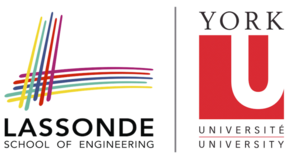Difference between revisions of "Main Page"
From EckfordLab
| Line 21: | Line 21: | ||
'''Latest Preprints''' | '''Latest Preprints''' | ||
| − | |||
* X. Chen, M. Wen, F. Ji, Y. Huang, Y. Tang, and A. W. Eckford, “Detection interval of aerosol propagation from the perspective of molecular communication: How long is enough?” accepted for publication in ''IEEE Journal on Selected Areas in Communications.''<br />{{Open|https://arxiv.org/abs/2204.08636|arXiv|*}} {{Closed|https://ieeexplore.ieee.org/document/9913432|IEEEXplore early access}} | * X. Chen, M. Wen, F. Ji, Y. Huang, Y. Tang, and A. W. Eckford, “Detection interval of aerosol propagation from the perspective of molecular communication: How long is enough?” accepted for publication in ''IEEE Journal on Selected Areas in Communications.''<br />{{Open|https://arxiv.org/abs/2204.08636|arXiv|*}} {{Closed|https://ieeexplore.ieee.org/document/9913432|IEEEXplore early access}} | ||
| Line 27: | Line 26: | ||
'''Latest Published Papers''' | '''Latest Published Papers''' | ||
| + | * A. S. Moffett, G. Cui, P. J. Thomas, W. D. Hunt, N. A. McCarty, R. S. Westafer, and A. W. Eckford, "Permissive and nonpermissive channel closings in CFTR revealed by a factor graph inference algorithm," ''Biophysical Reports'', vol. 2, no. 4, 100083, Dec. 2022.<br />{{Open|https://www.sciencedirect.com/science/article/pii/S2667074722000404|ScienceDirect open access}} | ||
* A. S. Moffett, P. J. Thomas, M. Hinczewski, and A. W. Eckford, "Cheater suppression and stochastic clearance through quorum sensing," ''PLOS Computational Biology,'' vol. 18, no. 7, e1010292, Jul. 2022.<br />{{Open|1=https://journals.plos.org/ploscompbiol/article?id=10.1371/journal.pcbi.1010292|2=PLOS Computational Biology|3=}} | * A. S. Moffett, P. J. Thomas, M. Hinczewski, and A. W. Eckford, "Cheater suppression and stochastic clearance through quorum sensing," ''PLOS Computational Biology,'' vol. 18, no. 7, e1010292, Jul. 2022.<br />{{Open|1=https://journals.plos.org/ploscompbiol/article?id=10.1371/journal.pcbi.1010292|2=PLOS Computational Biology|3=}} | ||
| − | |||
Revision as of 07:42, 4 November 2022
EckfordLabMolecular Communication and Information Theory Laboratory
EckfordLab, the Molecular Communication and Information Theory Laboratory under the supervision of Professor Andrew Eckford, is located in the Lassonde School of Engineering at York University, Toronto, Canada. The lab is concerned with problems involving molecular communication, computational biology, and information theory.
Latest Preprints
- X. Chen, M. Wen, F. Ji, Y. Huang, Y. Tang, and A. W. Eckford, “Detection interval of aerosol propagation from the perspective of molecular communication: How long is enough?” accepted for publication in IEEE Journal on Selected Areas in Communications.
arXiv* IEEEXplore early access
Latest Published Papers
- A. S. Moffett, G. Cui, P. J. Thomas, W. D. Hunt, N. A. McCarty, R. S. Westafer, and A. W. Eckford, "Permissive and nonpermissive channel closings in CFTR revealed by a factor graph inference algorithm," Biophysical Reports, vol. 2, no. 4, 100083, Dec. 2022.
ScienceDirect open access - A. S. Moffett, P. J. Thomas, M. Hinczewski, and A. W. Eckford, "Cheater suppression and stochastic clearance through quorum sensing," PLOS Computational Biology, vol. 18, no. 7, e1010292, Jul. 2022.
PLOS Computational Biology
Lab News
- Our recent paper on quorum sensing was covered by Phys.org and IFLScience.
- On Friday, January 21, 2022, Prof. Eckford will be speaking at "Using Biology for Communication and Information Transmission: A Workshop", a virtual event organized by the National Academies of Science, Engineering, and Medicine.
EckfordLab is affiliated with the Nanotechnology and Biotechnology Research Group and with the Centre for Innovation in Computing @ Lassonde.

